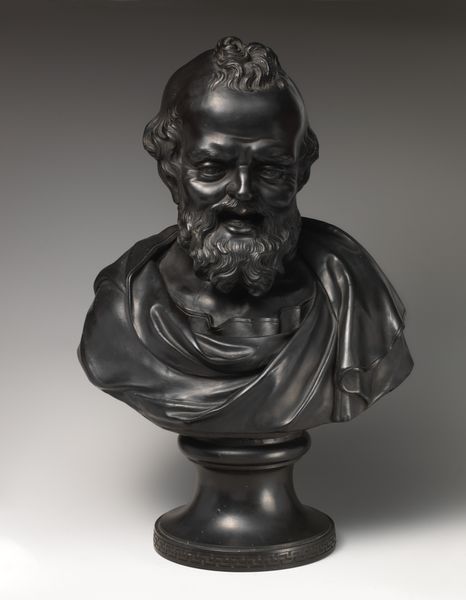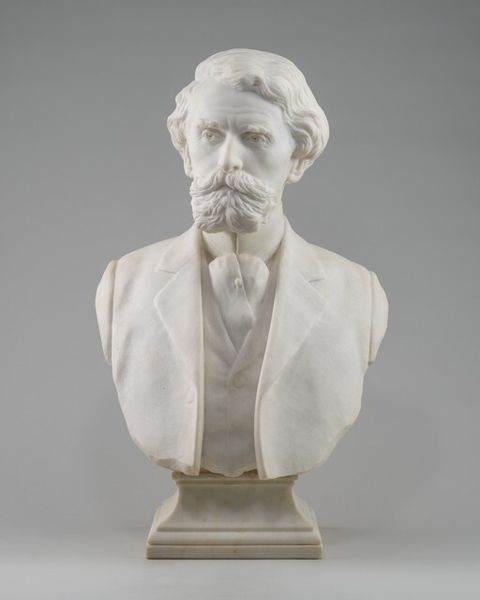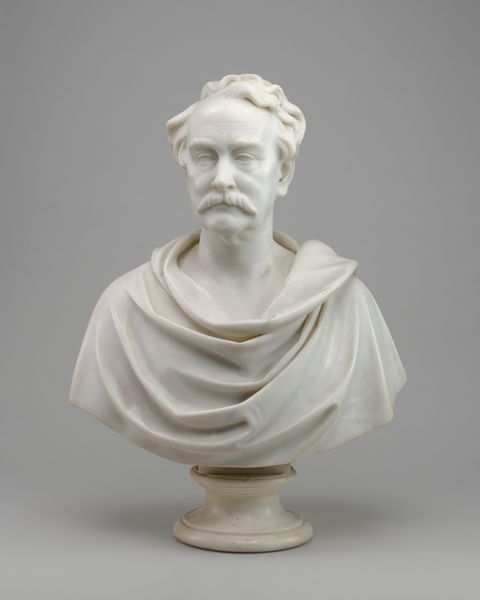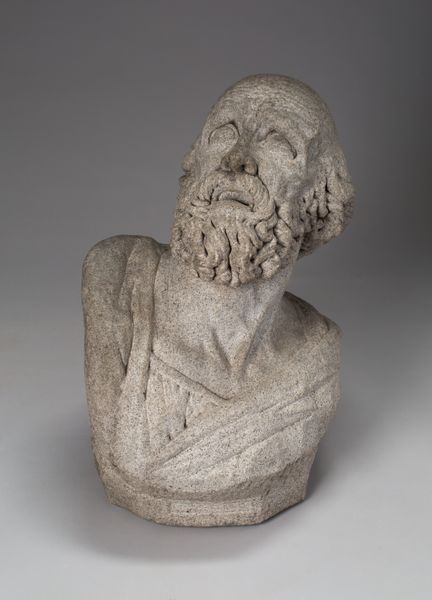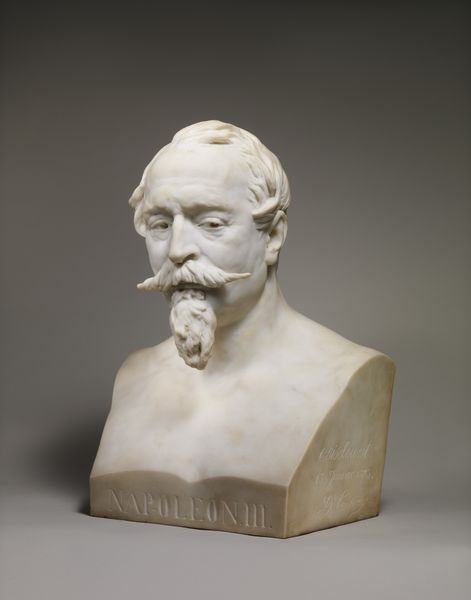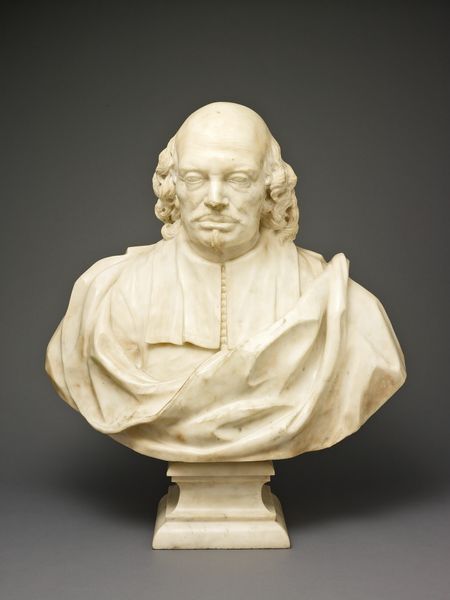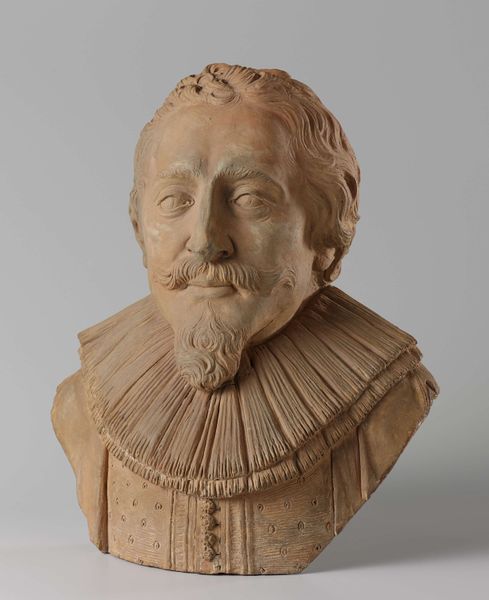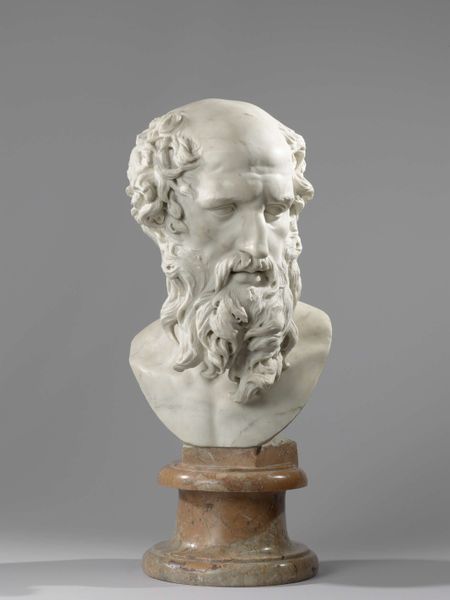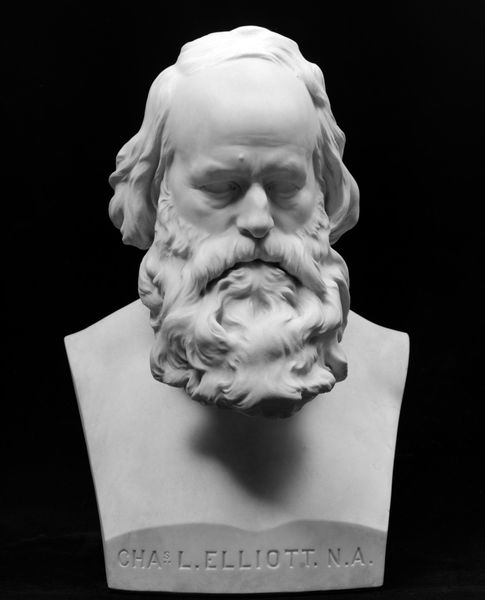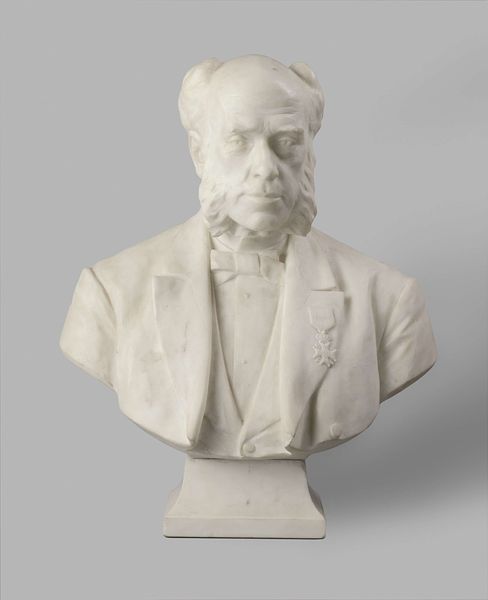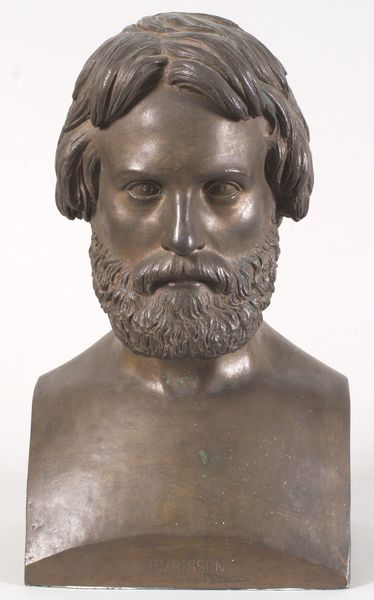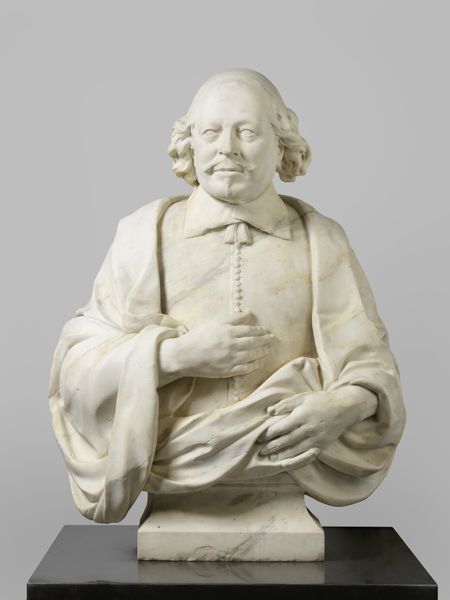
ceramic, sculpture
#
portrait
#
neoclacissism
#
ceramic
#
sculptural image
#
classicism
#
sculpture
#
decorative-art
Dimensions: Height with base: 14 cm (5 1/2 in.); W: 7.6 cm (3 in.); base height: 4.5 cm (1 3/4 in.)
Copyright: Public Domain
Editor: Here we have a ceramic bust of Homer made by the Wedgwood Manufactory around 1790. It’s quite small, and seeing it’s made of ceramic makes it feel less…monumental, I suppose? What's striking to you about it? Curator: I'm interested in the labor involved in creating these objects. Wedgwood was revolutionary in his factory production. Think about the division of labor—different artisans responsible for specific parts of the bust. How does mass production impact our understanding of artistic skill? Editor: That’s a good point. We’re still talking about "skill", but what constitutes skill changes entirely in a factory context, doesn’t it? Was this Homer intended for mass consumption? Curator: Absolutely. Wedgwood shrewdly targeted the rising middle class with affordable luxury goods. A ceramic bust allowed more people to engage with classical imagery. Consider how material accessibility reshapes social perceptions of culture and taste. Neoclassicism itself became commodified. Editor: So, by making Homer more available, does Wedgwood democratize high art or dilute its significance? Or both? Curator: Precisely. It’s a negotiation. We celebrate Homer, but we must acknowledge that Wedgwood products were tied to global trade networks including those of enslaved people as materials from far afield and mass markets relied on colonial structures. How does this awareness affect your understanding of the artwork? Editor: I see now, thinking about where the raw materials originated makes it more difficult to look at Homer just as a symbol of enlightenment values. It opens a different dialogue, thanks. Curator: Indeed, focusing on material reality prompts challenging and necessary conversations.
Comments
No comments
Be the first to comment and join the conversation on the ultimate creative platform.
